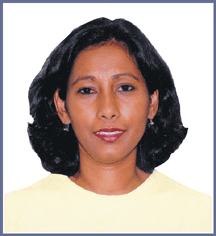Opening Position
March 2006

Once again we got a reminder of just how sensitive the financial markets are. We saw a major selloff in the Japanese markets, which - as expected - triggered a domino effect on markets throughout the world. Add disappointing earnings numbers from US corporations and you have a situation that just got worse. So what started off as a strong year ended up correcting, and rather rapidly. I must admit that although corrections are healthy for any market, when you have a 2% drop, it gets you thinking.
Prior to the Federal Reserve's FOMC meeting, I usually take a look at the yield curve. At present, it's looking a little flat, and given that the general consensus is that the Fed is going to tighten at their January 31st meeting, I am concerned that the yield curve may be heading in the direction of being inverted. And if that were to happen, that would not be a good sign for the US economy. I'm not suggesting that we are going to go through a recessionary period. But given that almost anything can happen, it doesn't hurt to expect the worst. If nothing else, it helps to preserve your capital.
SO with that in mind, you can see why it's important to design a trading system that gets you out of the market at the right time. When access to the markets is easy, the number of options available increases. This makes it important to be thorough with the different types of orders, front-end software, and trading systems that are out there. Lee Leibfarth, in his article "The Automated Daytrader" starting on page 22, addresses the various options that are available and how you can take advantage of them.
But before getting to the stage of placing that trade, you need to understand the market you are trading. You should be able to do so after reading Paolo Pezzutti's "Understanding Market Structure." The markets follow different behavior patterns, and you need to determine if it is volatile, trending, in a trading range, moving strongly in one direction, or moving but not with much momentum.
Only when you know what the structure of the market is will you be able to apply the correct trading technique. But that's just the first step. You still have to have discipline, as you will find out after reading this month's Technical Analysis of STOCKS & COMMODITIES interview with Ken Tower. Only then will you be able to know when to exit.
Here's to smart trading!
![]()
Jayanthi Gopalakrishnan,
Editor
Originally published in the March 2006 issue of Technical Analysis
of STOCKS & COMMODITIES magazine. All rights reserved.
© Copyright 2006, Technical Analysis, Inc.
Return to March 2006 Contents